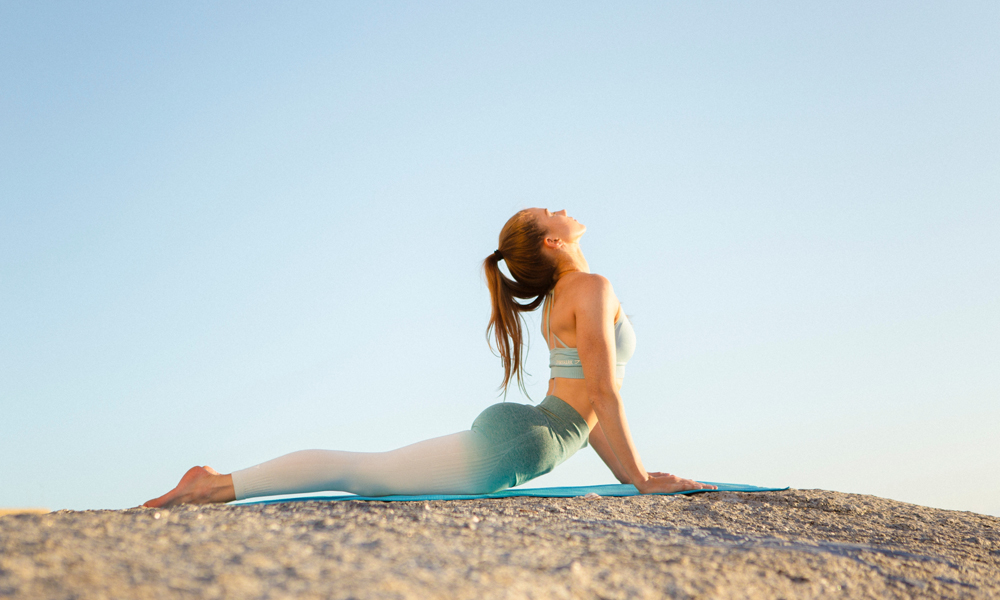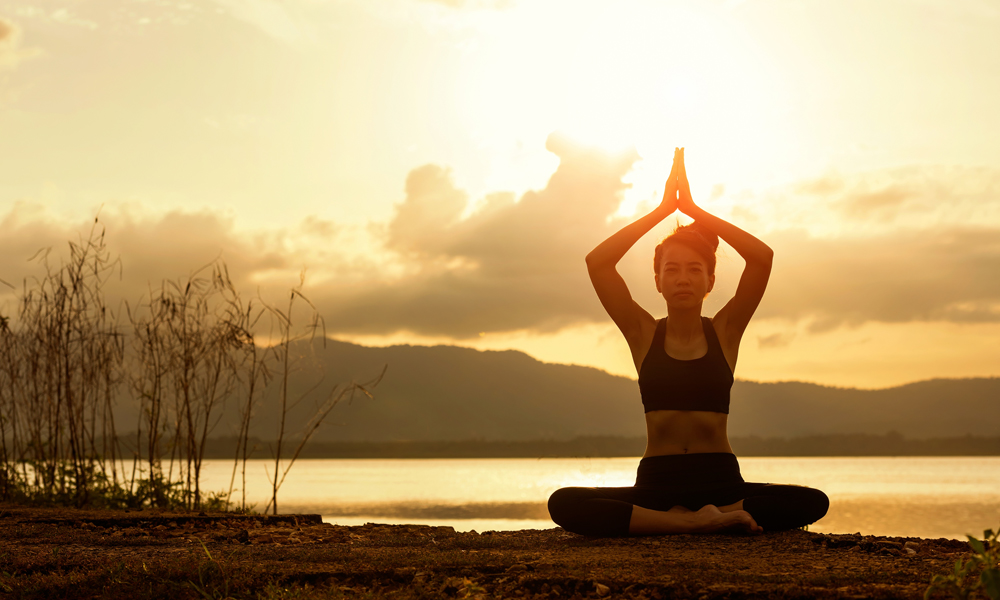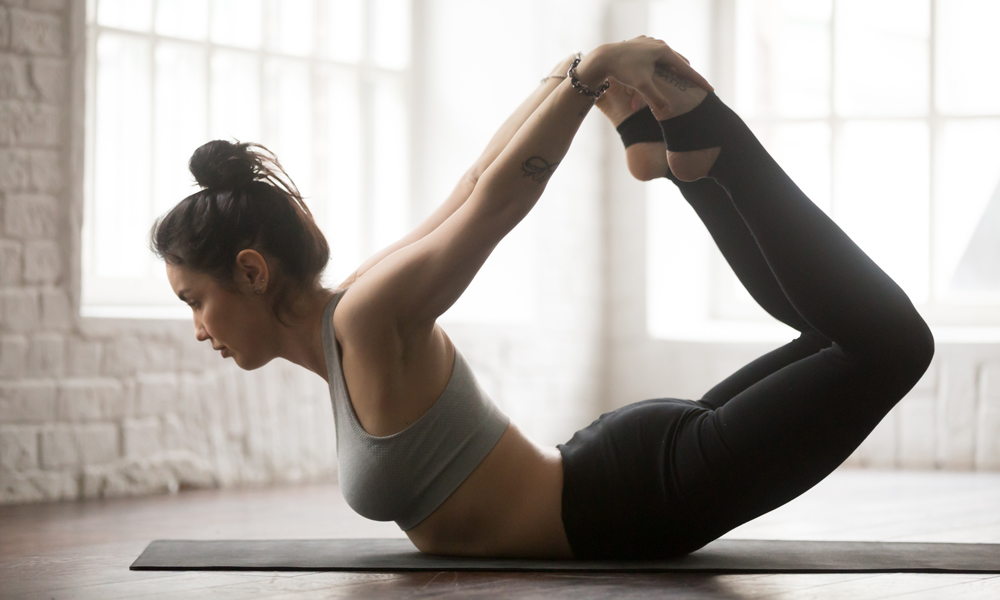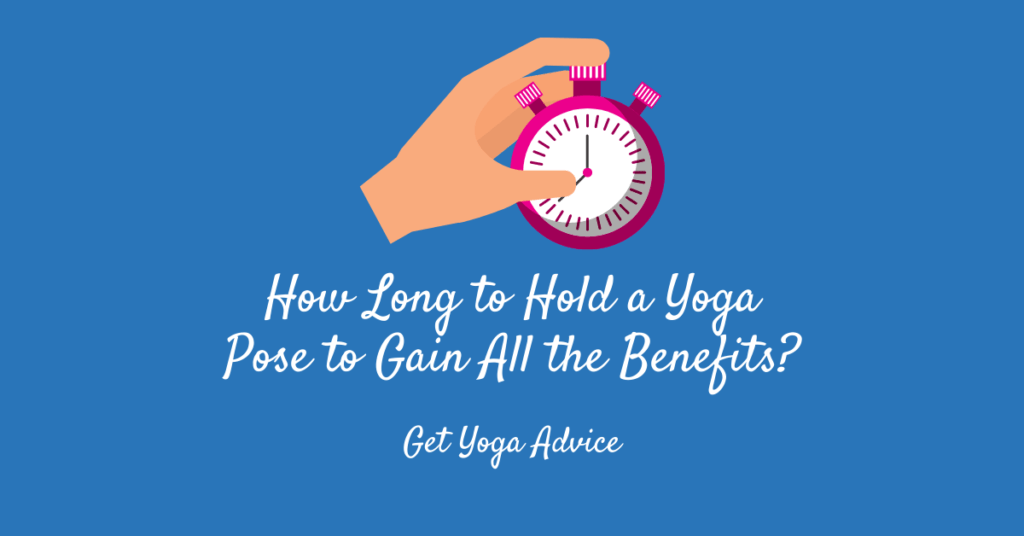For beginners, learning yoga asanas takes a lot of time, devotion, and practice. Not only do you have to focus on how to position your body, but you also have to learn how to breathe, centre, and focus. Once you have all that down, you might find yourself wondering how long to hold a yoga pose.
The truth is, there is no one-size-fits-all answer. Some poses are held for one to two breaths while others are held for five minutes or longer, depending on what the yoga instructor recommends and the type of yoga you’re doing. To help you sort it out, we’re going to take a closer look at the factors that determine how long you should hold a yoga pose.
Contents
Things to Consider
One thing that affects how long you should hold a yoga pose is how you feel. This changes from day to day. If you feel sick or had a bad night’s sleep, you won’t be able to perform as well as you do on a day when you feel at the top of your game.
Sometimes, you might not have enough time to fit in a full workout or maybe you want to do power yoga one day and something more restorative the next. Here are some questions to ask yourself to determine how you’re feeling so you can decide how much of a workout you’re up for.
How do I feel?
Are you tired? Sick? Anxious? Generally, if you want a physical work out, poses are held for shorter periods. If you feel stressed and need to calm your mind, poses are held longer.
Am I physically ready?
If you are injured, it’s really important to listen to your body and determine what you’re ready for. Luckily, yoga is very accommodating. Most of the poses can be altered or modified to make it easier on your body. If you have a muscle injury, it can be beneficial to hold poses for longer to thoroughly stretch the area. Remember to always check with your doctor after an injury to make sure you’re cleared to resume activity.
What do I want to accomplish with this session?

Source: canva.com
What’s your yoga style today? Do you want to work on flexibility, strength, weight loss, or toning? Or do you want to focus more on concentration and clearing your mind? How you feel in the moment determines what type of poses you should perform and how long you should hold each one.
How much time do I have?
Do you have five minutes before bed and need to calm down after a crazy day? Holding the right pose for that five minutes can do the trick. Do you have an hour or so to spend on a weekend morning? How much time you have affects not only the type of yoga session you can do but also how long to hold the poses.
Are There Benefits to Holding a Yoga Pose for a Long Time?
Yes, there are benefits to holding certain yoga poses for a long period of time. For example, in asanas like plank pose, every muscle group works together, giving you a total body workout and creating long, lean muscles.
Holding poses longer also forces you to work on balance and stability and gives you time to explore the pose. Can you go deeper? Do you need to make modifications or adjust your alignment? Are you properly balancing your weight? The longer you hold a pose, the more you get to know it.
Meditative and restorative poses are also better the longer you hold them. You get more time to focus on your breathing, clear your mind, and relax.
Are There Benefits to Holding a Yoga Pose for Less Time?
Yes. If you only hold a yoga pose for one or two breaths, you get a much different experience. For one, when you move through a yoga exercise sequence quickly, you increase your heart rate which has many advantages, including improving cardiovascular health.
An elevated heart rate also helps your body burn fat while you exercise, increasing your metabolism and building muscle. Your stamina increases, too, especially when you get your breathing in sync. Soon, you’ll be able to keep moving, doing longer sequences without getting tired.
How Long Should a Beginner Hold a Yoga Pose

Source: canva.com
The most important thing to remember as a beginner is you should always listen to your body. Some poses you will be able to hold for a long time. Others, you’ll need to work for a while to improve your strength, balance, and flexibility. Yoga is not a competition. Don’t push yourself, just keep practicing until you get there.
Types of Yoga
The type of yoga you’re practicing also affects how long you should hold each pose. These are only guidelines, though, and you should always listen to your body and stop if you feel uncomfortable. Here are a few of the many styles of yoga and how long you should aim to hold poses in each. Whether your need to stretch your shoulder blades or work your hip flexors on the yoga mat, there’s a type of yoga out there for you.
Ashtanga Yoga
This highly disciplined form of yoga isn’t meant for beginners. There are five different series of poses in Ashtanga, and yogis must master each individual pose before moving on to the next. The poses focus on breath and movement, improving patience, endurance, concentration, and confidence. Physically, Ashtanga yoga builds and strengthens muscles, improves flexibility, reduces body fat, and can lower blood pressure. Each pose should be held for a minimum of five breaths.
Bikram Yoga
Hot yoga is done in a studio where the temperature is as hot as 108 degrees. Each class is about 90 minutes and consists of the same 26 poses. Each Bikram pose is held for up to a minute. This type of yoga is challenging and the heat and humidity make it very intense, so, remember, listen to your body. If you have to stop before a minute, do so. Bikram yoga helps you build stamina and stability and improves focus.
Iyengar Yoga
Because Iyengar yoga is so detail-oriented, the poses are held for between one and five minutes. This type of yoga focuses on posture, alignment, and controlling breathing. It’s great for reducing stress as well as improving concentration, balance, stamina, strength, and flexibility.
Power Yoga

Source: canva.com
This type of yoga is a combination of Vinyasa and holding poses. It’s an extremely physical form and each asana, like chair pose, is held between one and five breaths. Power yoga improves focus and lowers stress and anxiety. There are many physical benefits, too, including improving posture and cardiovascular health and building abdominal muscles.
Restorative Yoga
As the name implies, restorative yoga is about both getting a deep stretch and relaxation. Poses consist of passive stretching and long holds with asanas, like forward bend or child’s pose. Classes occasionally use props, and poses can be held from 5 to 20 minutes. Restorative yoga reduces stress and promotes deep relaxation. It also releases tension and improves range of motion.
Vinyasa Yoga
Poses in Vinyasa yoga should be held for one to five breaths per pose. It targets large muscle groups and links breathing and movement. This is an effective type of yoga for weight loss as it increases strength and stamina and can improve cardiovascular health. Vinyasa is also known for its mental benefits. It relieves stress, improves concentration, and helps you connect your body and mind.
Yin Yoga
Yin yoga is composed only of poses practiced on the floor and focuses on the lower spine, pelvis, inner thigh, hips, and hamstrings. It’s ideal for calming anxiety, lowering stress, and preparing to meditate. Physical benefits include improving flexibility, range of motion, and circulation. A yin yoga pose should be held for five minutes or longer.
Final Word on How Long to Hold a Yoga Pose
There’s no straightforward answer for how long to hold a yoga pose. Each type of yoga has a different recommendation as to how long poses should go on for. Some are measured in breaths while others are measured in minutes.
A good rule of thumb is that the long poses are better for restorative yoga or meditating while short poses are better for getting your heart rate up and getting a better cardiovascular workout.
The big takeaway, though, is that you should always listen to your body. There is no wrong answer for how long to hold a yoga posture. Maybe you’re in bridge pose and the stretch feels amazing or in mountain pose and you’re feeling relaxed. In these cases, you can hold the pose for as long as you want. Other times, you might be having a bad day or only have a short amount of time to squeeze in a yoga session. In that case, you can move through poses quickly, as long as you hold each for at least one to two breaths.
If you ever find a yoga pose painful, pull back a little. Ask your yoga teacher how to modify the pose if you have to or stop and come back to it later. Don’t feel that you have to push yourself to do better than last time. Yoga is not a competition, it’s an opportunity to learn and grow, strengthening your mind and body. If you keep up with your yoga practice, you’ll get to where you want to be.



